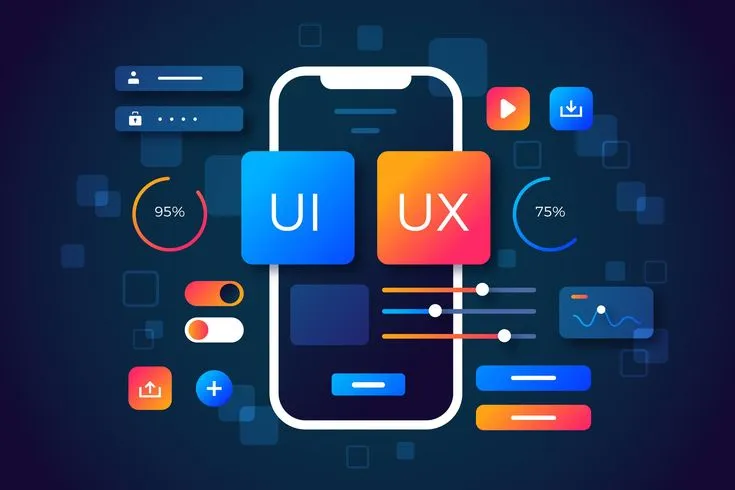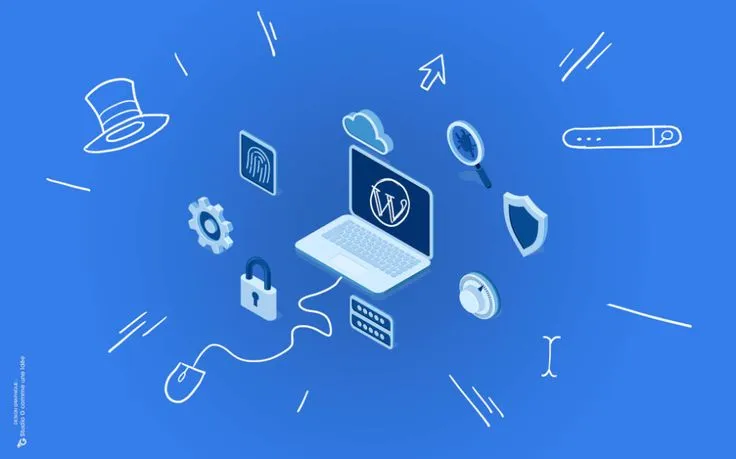As technology evolves at lightning speed, so do the expectations of today’s users.. What was considered cutting-edge in design just a year ago can quickly become outdated. As we move through 2025, it’s clear that modern UI/UX design is not just about making things look beautiful it’s about crafting intuitive, personalized, and human-centered digital experiences.

UI (User Interface) and UX (User Experience) design are now central to the success of any digital product. From websites to mobile apps and enterprise platforms, the way users interact with digital spaces determines whether they stay engaged or move on. To stay ahead, designers must keep pace with emerging trends that elevate both function and form. Let’s take a closer look at the innovations setting the stage for the future of Modern UI/UX design
1. Personalized User Experiences
Personalization is no longer a luxury it’s an expectation. Thanks to advancements in artificial intelligence (AI) and machine learning, apps and websites are becoming smarter and more intuitive. Today’s interfaces are designed to adapt dynamically to each user’s behavior, preferences, and context.

From personalized content feeds and smart onboarding processes to tailored product recommendations, digital experiences are becoming increasingly user-centric. This level of customization drives user involvement and cultivates lasting brand trust For instance, music platforms like Spotify and video services like Netflix use intelligent algorithms to deliver tailored recommendations that keep users coming back.
The future of UI/UX lies in anticipating user needs before they even express them—and delivering seamless, custom experiences at every touchpoint.
2. Dark Mode as a Standard Feature
What was once a trend has now cemented itself as a standard user expectation. Dark mode has grown into a staple in UI design, and for good reason. It reduces eye strain in low-light conditions, conserves battery life (especially on OLED screens), and brings a sleek, modern aesthetic to digital products.

In 2025, more platforms are offering dark mode as a default system feature, allowing users to toggle between light and dark themes effortlessly. Designers are now investing more time in perfecting dark color palettes, improving contrast ratios, and ensuring that text and elements remain highly legible in dark environments.
3. A New Era of Design: Neumorphism and Glassmorphism
Minimalism has long been a dominant theme in digital design, but we’re now seeing the rise of new visual styles like neumorphism and glassmorphism that offer a fresh spin on modern aesthetics.
Neumorphism, often described as a blend of skeuomorphism and flat design, creates soft, extruded visuals that mimic physical buttons and surfaces. It gives interfaces a tactile feel and works especially well for dashboard designs, buttons, and form elements. However, it must be used with caution, as excessive use can hinder accessibility due to low contrast.

Glassmorphism, on the other hand, uses transparent backgrounds, blur effects, and frosted-glass visuals to create depth and layering. This trend is inspired by macOS and Windows interfaces and is being widely adopted in both mobile and web designs.
These aesthetic trends add visual richness to the user interface without overwhelming the user, provided they’re used thoughtfully and strategically.
4. Microinteractions & Functional Animations
Micro interactions those tiny, often overlooked design details are becoming increasingly powerful tools in UX design. Think of the satisfying ripple when you tap a button, the smooth animation when you pull to refresh a feed, or the visual cue when you successfully complete a task.
These small animations enhance the user journey by providing clarity, improving interaction, and adding a touch of delight. In 2025, designers are integrating microinteractions more deeply into user journeys, not just for delight but to improve clarity and guide users through complex flows.
Similarly, functional animations help bridge transitions between screens, provide context, and draw attention to important elements. When used judiciously, they make interfaces feel alive and responsive.
5. Accessibility as a Design Imperative
Accessibility is no longer an optional feature it’s a fundamental aspect of effective and inclusive design. With increasing emphasis on inclusivity, designers are prioritizing features that make digital products usable for people of all abilities.

From proper color contrast and scalable typography to screen reader compatibility and keyboard navigation, accessibility features are being built in from the ground up. In 2025, we’re also seeing tools that automatically test and improve accessibility, making it easier for teams to stay compliant with standards like WCAG
6.Intentional Minimalism for Meaningful Design
The “less is more” philosophy is evolving into “less but better” in modern UI/UX design. Designers are moving beyond minimalism by removing clutter while emphasizing clarity, consistency, and strong content hierarchy. Strategic use of whitespace, simplified navigation, and clean typography play a crucial role in enhancing usability without overwhelming users.
7. Inclusive and Accessible Design
Modern UI/UX isn’t complete without accessibility. With a global push for digital inclusivity, designers are prioritizing color contrast, keyboard navigation, screen reader compatibility, and inclusive content. The aim is to create digital experiences that are seamless and accessible to all users, regardless of their abilities.
8. Augmented Reality (AR) Integration
Modern UI/UX design now focuses on crafting intuitive, context-aware AR experiences, particularly in sectors like retail, education, and gaming Modern UI/UX design now focuses on crafting intuitive, context-aware AR experiences, particularly in sectors like retail, education, and gaming
9. Skeuomorphism Reimagined
While flat design once took over, there’s a subtle resurgence of skeuomorphism but in a modern form. Today’s skeuomorphic elements add realism without overwhelming the design, combining functionality with familiarity to create immersive, user-friendly interfaces.

10. Sustainable and Ethical Design
In an era of conscious consumption, modern UI/UX design goes beyond the screen. Ethical design now prioritizes user well-being, avoids manipulative dark patterns, and emphasizes sustainability. From energy-efficient design elements to data privacy-focused UX, the future of digital experiences is as much about responsibility as it is about innovation.
Conclusion
Modern UI/UX design is no longer just about making things look good it’s about creating experiences that feel good, work well, and do good. The key trends of 2025 focus on delivering experiences that are personalized, inclusive, authentic, and socially responsible . Whether you’re a designer, developer, or business owner, embracing these trends means staying relevant, user-focused, and future-ready. Because in design, the future really is now.
